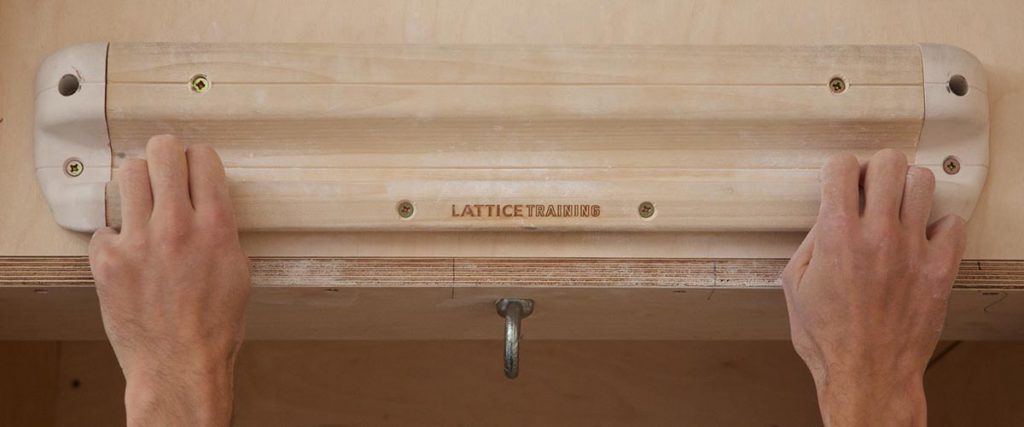

This is a guide on how to properly install your Lattice Testing and Training Rung. There are obviously a lot of different ways you can go about mounting your Rung so the ideas below are not definitive and it is up to you to ensure the Rung is mounted securely before you use it. If you are unsure on how to securely mount your Training rung please seek professional guidance from a registered builder.
Step 1: Location
The most important part of installing your Rung is choosing an appropriate location for it. It’s essential you attach it to a secure structure that can support the loads you will be putting through it as the last thing you want is for it to come flying off mid way through a session!
Common options include mounting above a doorway, a roof beam in an attic or mounting to a detachable pull up bar. Bear in mind that the load on the Rung can be quite high, especially if you are doing weighted fingerboarding or explosive pull up sessions.
If you have a few options for locations that’ll be strong enough to support the Rung (with you hanging off it!) then the next thing to consider is ergonomics. The Rung should be at a height where you can comfortably reach it with outstretched arms, preferably with some room either side so you are not banging your elbows while using the Rung.
Lastly, you may also want to consider options for mounting a pulley underneath the Rung so you can use the rung with assistance e.g. if you’re training a weaker grip type.
Choose a secure structure
You must use your own judgement on what location a training rung is mounted. Do NOT attach your Rung to weaker structures such as plasterboard as it is not strong enough to support the Rung when loaded. Seek professional advice from a builder if you are unsure about the structural integrity of your chosen mounting location.
Portable Board
The Lattice Rung is NOT designed as a portable fingerboard! Don’t try and modify your Rung to make it into a portable finger.
Flatness
Make sure the surface you are mounting the rung to is flat. If it is excessively bent, warped or featured then you could crack the Rung when you attach it.
Step 2: Fixings
The hardware you’ll need for mounting your Rung will depend on what you are attaching the Rung to.
If you are attaching the Rung to something other than wood you may need to consult a professional for further guidance as building materials will vary greatly in strength and structural integrity.
If you are attaching the beam to an internal wall (i.e. studwork with plasterboard on top) then we recommend mounting a rectangle of 18mm plywood to the studwork and then attaching the Rung to the plywood.
You MUST make sure that the entire back surface of the Lattice rung is in contact with a solid surface, whether this is a wall, wooden board or a beam. No part of the back surface of the rung must overhang as this may cause uneven stress across the wooden structure of the Lattice rung which could lead to the product breaking.
Step 3: Mounting
When mounting your Rung ensure it is level. We recommend attaching the rung using a single screw, getting it level and then fixing it in place with a second screw. Double check the level before fastening the remaining of the screws.
The Rung should always be attached with 6 screws.
Check For Damage
Before mounting your Rung first check it for damage such as cracks. While we inspect every rung before it is sent out climatic changes during transit can cause the rung to become damaged.
